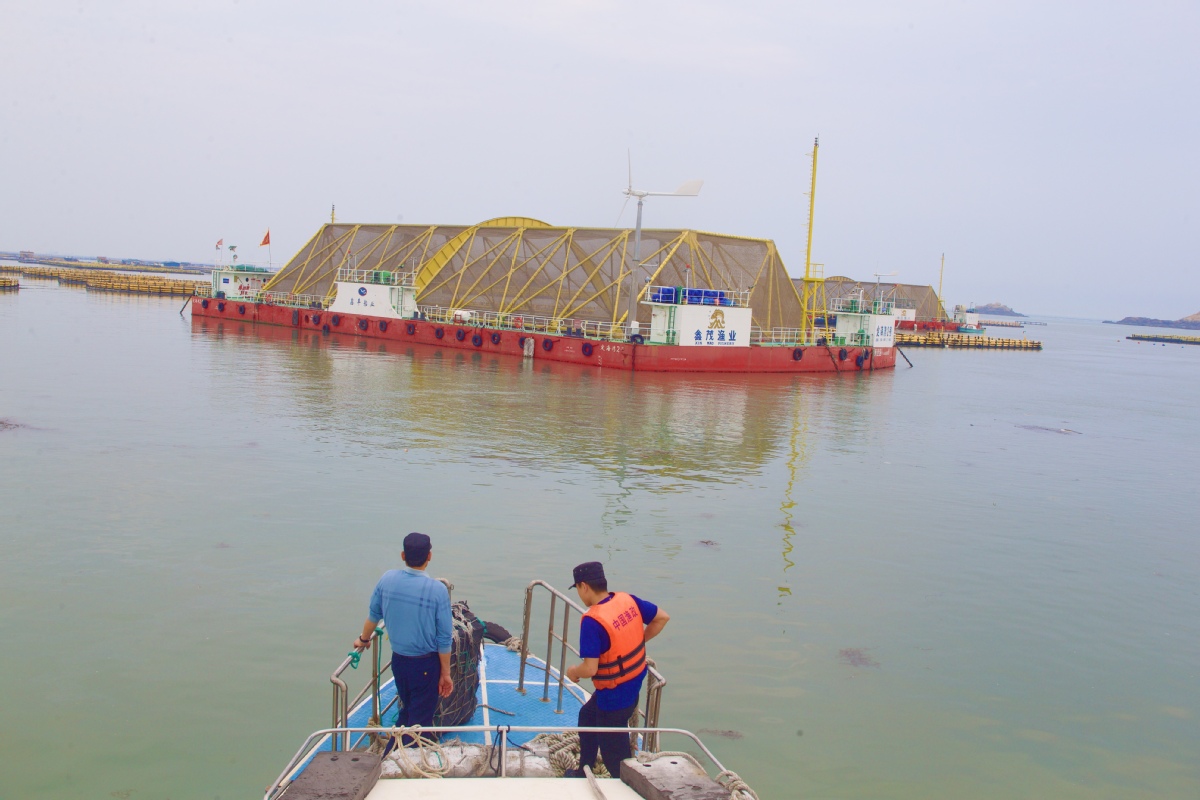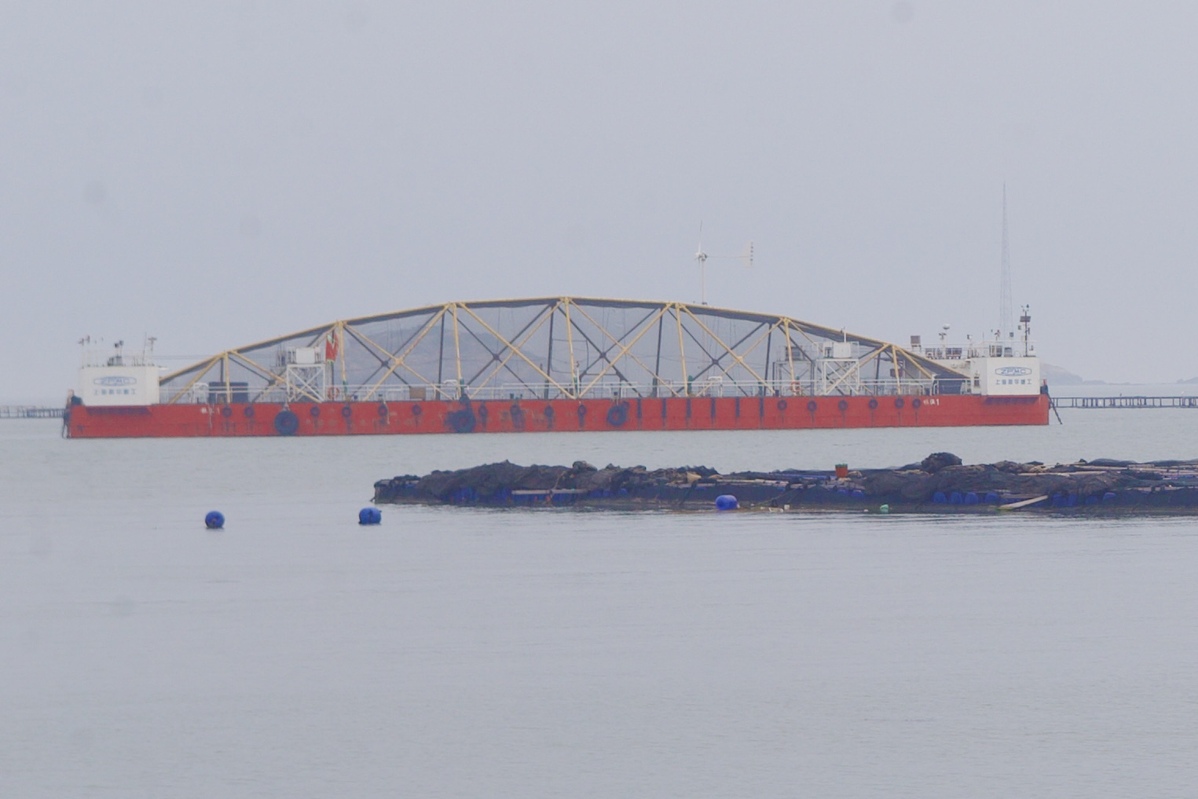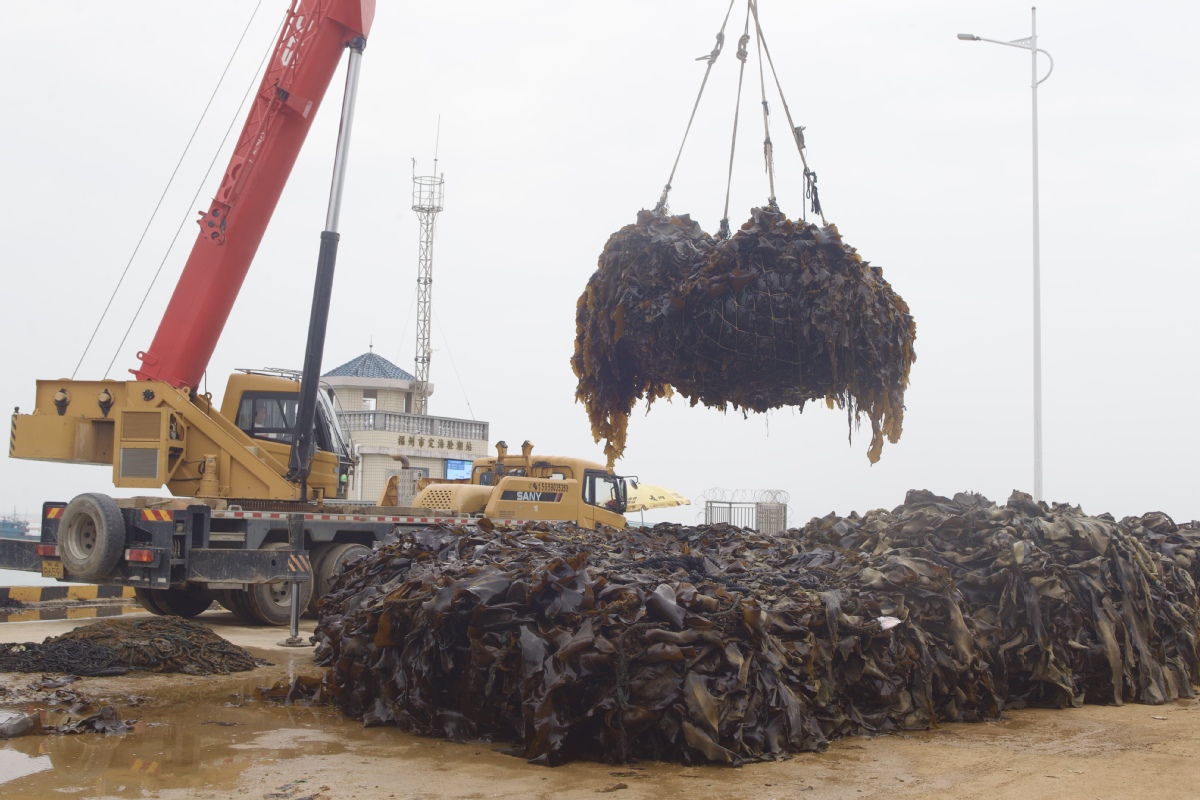
A vessel is approaching a deep-sea fish farm off the shore of Lianjiang county, Fujian province.By HUMEIDONG/CHINA DAILY
Three kilometers off the coast of Lianjiang county, Fujian province, stands a $2.5 million worth deep-sea farming platform, where traditional coastal aquaculture is not feasible.
Ten others loom in the waters nearby.
At the center of each platform is a horizontal octagonal cylinder, lying semi-submerged under water, with its sides covered with nets.
"More than 200,000 croakers are raised inside," said Lu Tongfeng, general manager of Fujian Xinmao Fishery Development Co, which owns the platform.
"The cylinder rotates regularly, so that algae and barnacles do not clog the nets and suffocate the fish inside," he explained. "It can also withstand strong typhoon."

A $2.5 million worth deep-sea farming platform, where 200,000 croakers are raised inside, looms in the water near Lianjiang county. By HUMEIDONG/CHINA DAILY
As coastal waters are already clogged with fish farms, fishing companies like Fujian Xinmao are turning their eyes to areas farther offshore, where waters can be as deep as 30 meters.
Lu, who used to work in the shipbuilding industry, said the advance toward deeper waters was made possible by engineering advancements that can create controlled environments for fish cultivation in the open ocean.
"Building the platform is much more complicated than building a ship because it must be engineered to be strong enough to withstand extreme weather," he said.
Lu, who quit shipbuilding to develop the platform in 2003, said the company had reached out to several design teams, but found no success until they talked to a team from the Wuhan University of Technology in Hubei province.
A design was rolled out in 2020, leading to the platform's debut in July 2021.
It was put into use amid a nationwide campaign to build "blue grain barn" to meet the nation's growing need for food, and as authorities began racing to phase out aquatic farms close to shores that clog up shipping lanes and damage the ecological health of mangroves.
Lin Yinghui, an official with the county's ocean and fishery bureau, said traditional aquaculture creates problems such as feed pollution and eutrophication, which in turn affects the quality of aquatic products and even causes red tides that can wipe out yields.

A crane is moving seaweed, which is commonly used in local cuisine, near a fishery dock in Lianjiang county. By HUMEIDONG/CHINA DAILY
"That hinders the long-term development of the marine industry," he said.
Lin added that in recent years, the county has promoted ecological aquaculture platforms, so aquaculture can be gradually shifted to the deep sea.
"The campaign reduces aquaculture density close to the shore, allowing aquatic products such as croakers to grow in a purely natural seawater environment, a practice that improves meat quality and taste," he said.
China laid out its ambition to build "modern sea farms" in the No 1 Central Document last year.
The document is the first policy statement released annually by the Communist Party of China Central Committee and the State Council, China's Cabinet, and has long served as an indicator of government priorities.
In June, six departments led by the agriculture ministry issued a guideline to speed up the construction of deep-sea farms and step up the creation of cages and other smart equipment needed to run such farms.
In this year's No 1 Central Document, which was released in February, authorities reiterated its support for deep-sea aquaculture.
It called for a "macro food perspective" and asked local authorities to expand food sources and explore a comprehensive food monitoring and statistical system.